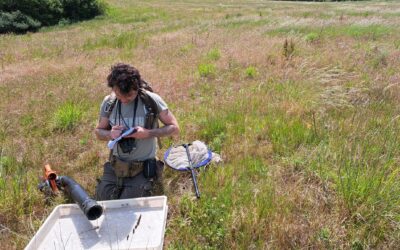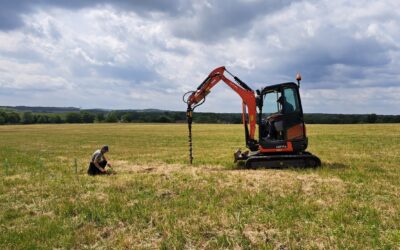
Channel 4’s weekly Great Garden Revolution programme has shown us the myriad ways those with some form of outside space can transform their backyards into “glorious green spaces”. But as Tamara Kelly of Ideal Home argues, why not go a step further and create a garden that supports the environment?
I’ve been thinking about the messages of this year’s Earth Day and the importance of restoring our earth, calling on us all to embrace natural processes, emerging green technologies, and innovative thinking to restore the world’s ecosystems. Restoring the earth encompasses goals and actions including reforestation and regenerative agriculture to help capture carbon and support the long-term sustainability of our planet.
At Ewhurst Park, the 925-acre estate in Hampshire which I took over last year, we’ve got a rather large green space to cultivate! It’s been interesting to think of ways we can increase biodiversity and control climate change. But perhaps the most exciting development is a technique which has been around for millennia; one which farmers or more ambitious hobbyist gardeners can adopt to make their land thrive and help create a more sustainable world.
Forest gardening is a system which seeks to grow tree dominated ecosystems to mimic the architecture, structure, and ecological functions of natural woodland. It’s a technique which dates back some 2000 years, the oldest thought to be found in Morocco. Actually, the first forest garden ever was also in Africa, created on the slopes of Mount Kilimanjaro in Tanzania when tribes migrated to the forested slopes for cooler climates and better growing conditions. Today, forest gardens can be found in places as far and wide as India, Nepal, Zambia, Sri Lanka, Mexico, Indonesia and Tanzania.
These gardens typically comprise five layers, just like natural forests – starting with a layer of rooting plants, a shrub layer, a ground layer of edible herbs, a mid-canopy, and a high-canopy. These layers help the garden to absorb and retain water, helping to prevent flooding and allowing soil life to thrive. They also capture carbon and maximise photosynthesis, with the taller trees supposed to absorb some 20kg of carbon a year.
Anyone can plant a forest garden, however large or small the plot of land they might have available. At Ewhurst, we’ve got the unique opportunity of a plot so large that its produce can bring real benefit to our surrounding communities. Our forest garden sits next to the native woodland to illustrate how a forest garden system can blend into a natural woodland environment to create an integrated landscape.
Each species we have chosen has been done so carefully to promote sustainability and the right conditions for wildlife to thrive. These species have been selected from reasons as broad as their edible, medicinal or functional properties for wildlife, to nitrogen fixing properties which enable healthy growth and photosynthesis. We want to provide a practical demonstration of a forest garden system in evolution; an incentive to encourage people to grow their own food, creating a niche for wildlife in their own gardens and laying the foundations for a more sustainable lifestyle.
For those keen to follow the mantra of restoring our earth, there is perhaps no better place to start than with forest gardens. In nearly every exposé of regenerative agriculture, there is almost always a reference to them, as well as the reasons why farmers should embrace them. Last month, Treehugger.com called forest gardens one of the “key strategies of regenerative gardening” while National Geographic featured a detailed piece on how forest gardens show that native land stewardship can outdo nature. And just as the Canopy Project encourages the planning of trees, global initiatives such as Trees for Future.org feature The Forest Garden Program as a simple, replicable and scalable programme to provide families with sustainable food sources – something farmers everywhere can embrace to help meet some of the most pressing challenges in the world today.
I’m proud that Ewhurst Park is doing its bit towards achieving this goal, and hope that others will feel inspired to do the same, whatever size their garden might be!



